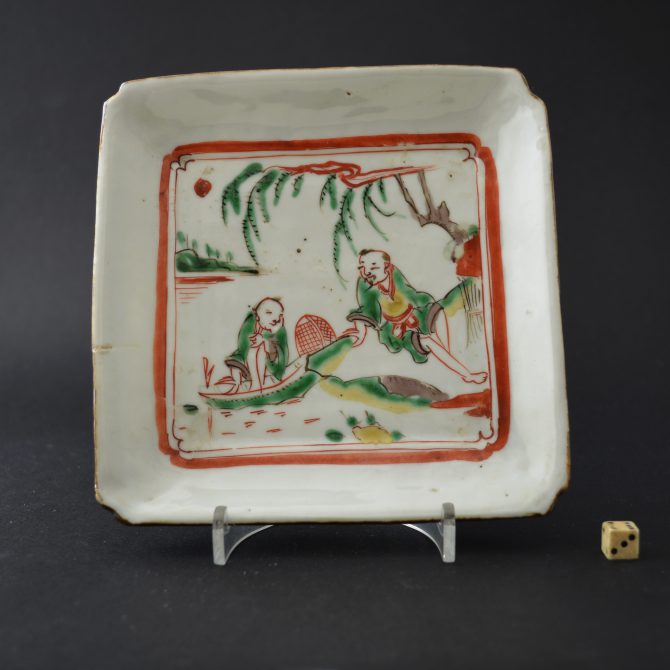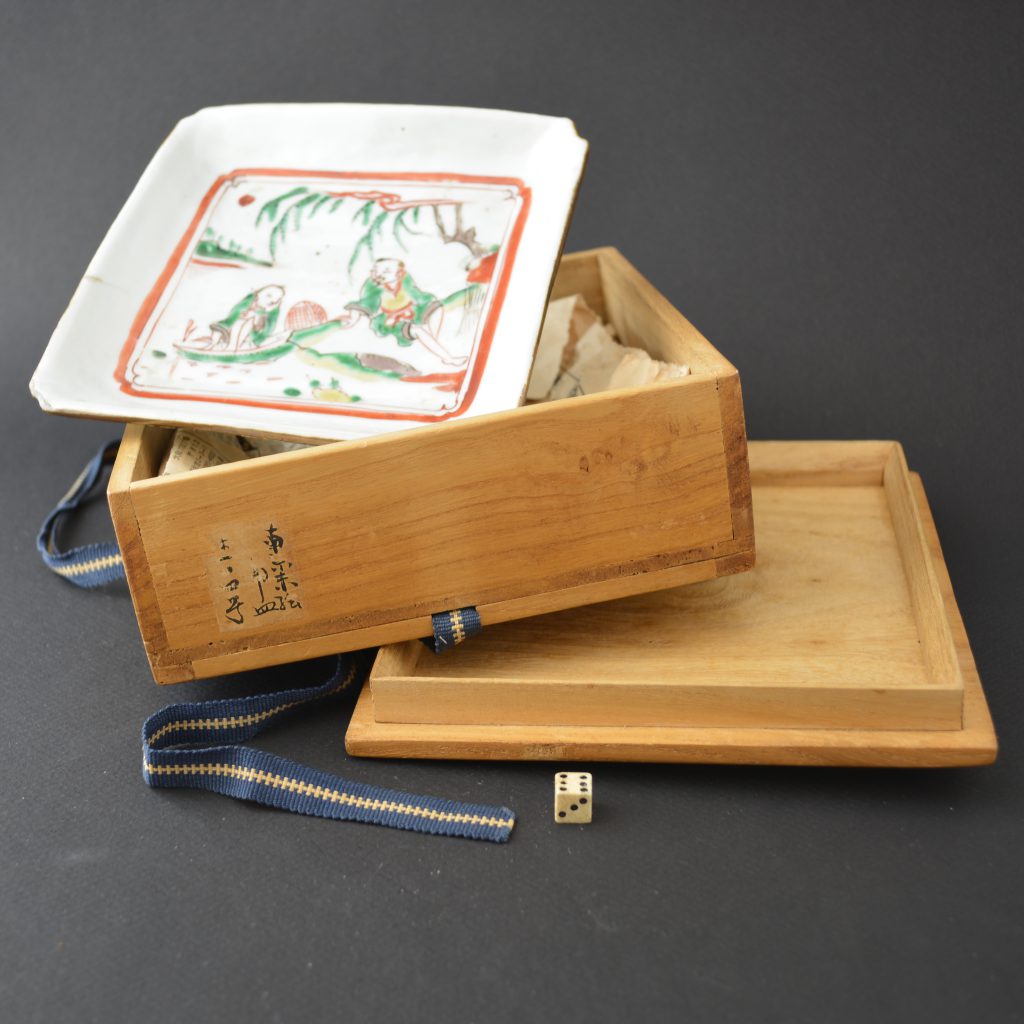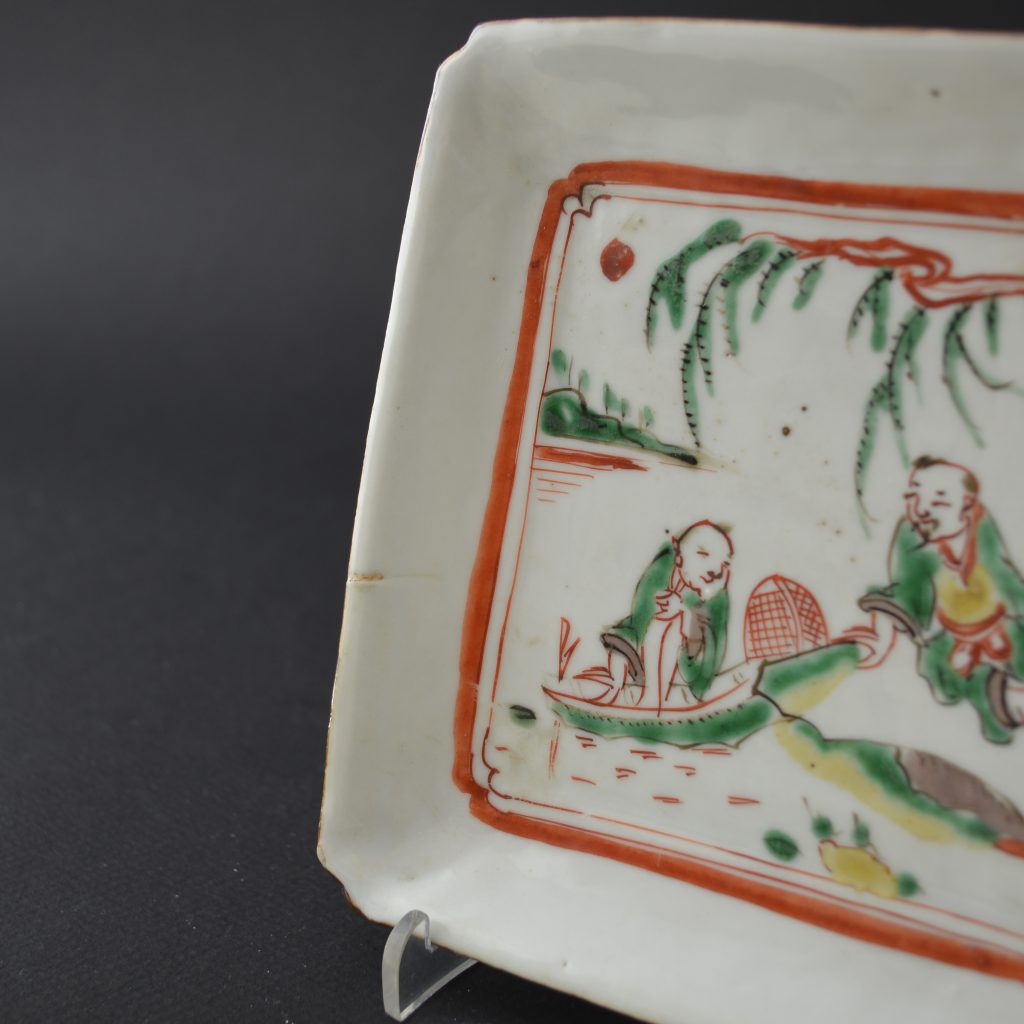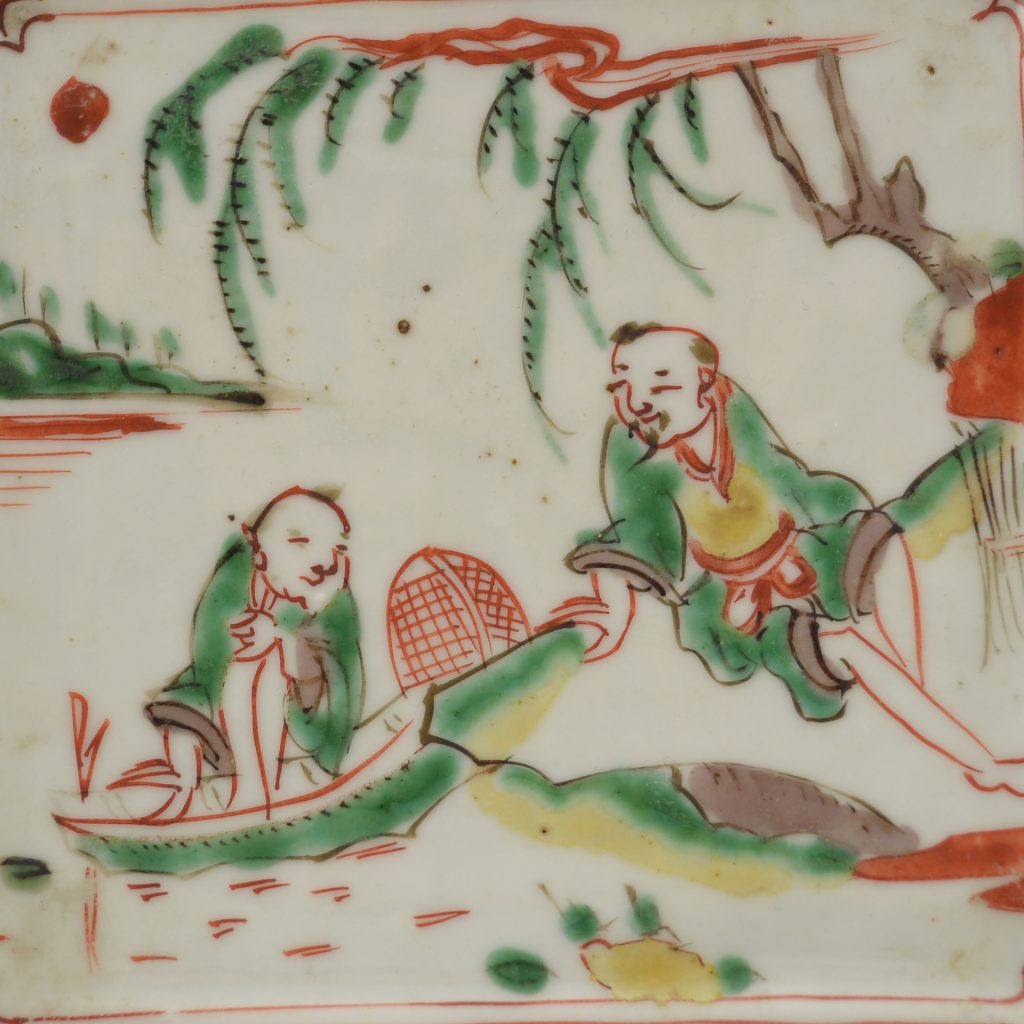
A Ming Porcelain Dish, Chongzhen Period 1628 – 1644, Made for the Japanese Market.
A Ming porcelain dish, Chongzhen 1628-1644. This Transitional porcelain dish is made for the Japanese market and is for serving food at the Tea Ceremony. The scene of this square Ko-akai with canted corners depicts a man under a weeping willow at the waters edge conversing with a fisherman in a small craft. This Ming porcelain dish comes with an old Japanese storage box.
SOLD
- Condition
- In excellent condition : a very small frit to the lower left side, minor wear, there is a firing crack to the left side. The dish is warped as is typical of this type of Ming porcelain.
- Size
- Diameter : 18.1 cm (7 1/4 inches)
- Provenance
- N/A
- Stock number
- 25003
Information
Ming Porcelain Made for Japan :
During the late Ming Period the Chinese made a large among of porcelain for the Japanese market, it was made from the Wanli period (1573-1620) and ended in the Chongzhen period (1628-1644), the main period of production being the 1620`2 and 1630`s. The porcelain objects produced were made especially for the Japanese market, both the shapes and the designs were tailored to Japanese taste, the production process too allowed for Japanese aesthetics to be included in the finished object. Its seams firing faults were added, repaired tears in the leather-hard body were too frequent to not, in some cases, be deliberate. These imperfections as well as the fritting Mushikui (insect-nibbled) rims and kiln grit on the footrims all added to the Japanese aesthetic. The shapes created were often expressly made for the Japanese tea ceremony meal, the Kaiseki, small dishes for serving food at the tea ceremony are the most commonly encountered form. Designs, presumably taken from Japanese drawings sent to China, are very varied, often using large amount of the white porcelain contrasting well with the asymmetry of the design.


